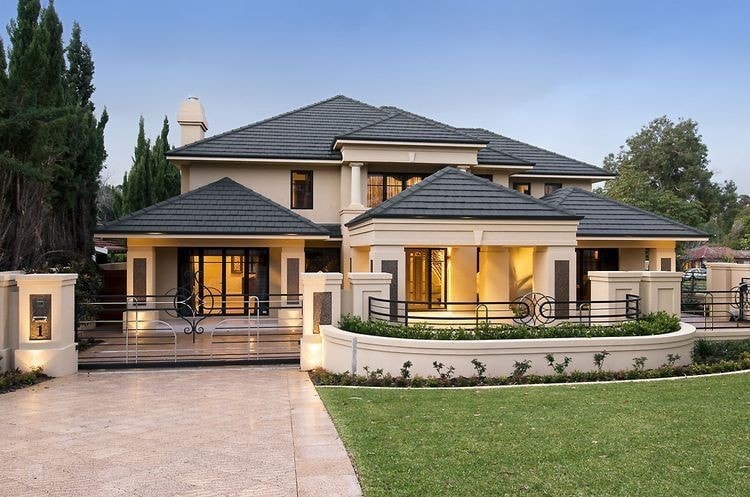The process of crafting a dream home goes beyond bricks and mortar; it involves a symphony of creativity, functionality, and the seamless integration of architectural elegance. Your home is not only a structure; it is a reflection of your personality, a sanctuary where memories are made, and a testament to thoughtful design.
This step-by-step guide will help you discover architecture design for homes, the crucial role of a home design architect, and the transformative power of architectural designs for houses.
Understanding the Essence of Architectural Design for Homes
Architectural design for homes is a multidimensional endeavour that involves envisioning and creating spaces that are not only aesthetically pleasing but also functional and harmonious. It encompasses a careful consideration of the client’s needs, the local environment, and the architectural language that will define the residence.
1. The Home Design Architect: A Visionary Craftsman
At the heart of any successful home design project is a skilled and experienced home design architect. These design practitioners are visionary craftsmen who transform dreams into tangible structures. Their expertise goes beyond aesthetics, providing excellent structural integrity, spatial efficiency, and environmental sustainability. Collaborating with a registered design practitioner ensures that your dream home is visually appealing and compliant with relevant regulations and standards.
2. Collaboration and Communication: Key Pillars of Success
Effective collaboration between the homeowner and the design practitioner is essential for a successful home design project. Communication is the bridge that connects ideas and expertise, transforming concepts into reality.
3. Unveiling the Architectural Designs for Houses
Architecture designs for houses are the blueprints that breathe life into your vision. This step involves translating concepts into tangible plans that detail your dream home’s layout, spatial organisation, and design elements.
4. Incorporating Functionality and Practicality
While aesthetic appeal is essential, the functionality of a home is equally crucial. A skilled home design architect ensures that the architectural design meets your visual preferences and aligns with the practical needs of your lifestyle. From efficient space utilisation to integrating smart home technologies, every detail is considered to enhance the overall functionality of the residence.
5. The Role of a Registered Design Practitioner in Compliance and Quality Assurance
Engaging a registered design practitioner is a commitment to quality and compliance. These professionals are well-versed in local building codes, zoning regulations, and safety standards, ensuring your dream home is beautiful and legally sound. This expertise level is invaluable in navigating the complexities of construction projects, minimising risks, and guaranteeing structural longevity.
6. Renovation Architect: Transforming Existing Spaces
For those considering a renovation or remodelling project, a renovation architect is a key player. These specialists have the skill to breathe new life into existing structures, optimising space, and incorporating contemporary design elements. Whether it’s revamping a historic home or modernising a dated layout, a renovation architect adds a fresh perspective to the design process.
7. Balancing Aesthetics and Sustainability
Architectural elegance goes hand in hand with sustainability. The conscientious use of materials, energy-efficient design, and a focus on eco-friendly practices are integral to the modern architectural landscape. Your dream home can be a testament to both beauty and environmental responsibility, creating a space that is not only visually stunning but also leaves a minimal ecological footprint.
Importance and Need for Designing Your Dream Home
The importance and need for designing your dream home are multifaceted, touching upon vital aspects of personal fulfilment, functionality, and long-term satisfaction.
a) Personal Expression and Identity
Designing your dream home allows you to imprint your unique style and preferences onto the physical environment, creating a space that resonates with your identity.
b) Optimised Living Spaces
Thoughtful design enhances the efficiency and usability of living spaces. It ensures that rooms are appropriately sized, intuitive traffic flows and maximized storage solutions. This optimisation contributes to a more comfortable and convenient daily living experience.
c) Long-term Satisfaction
A carefully planned and aesthetically pleasing living space provides enduring joy and contentment. It becomes a sanctuary where you can recharge, create memories, and find solace, fostering a sense of attachment and satisfaction over the years.
Life is dynamic, and your home should be adaptable to changes in your lifestyle. Whether it’s accommodating a growing family, incorporating a home office, or preparing for retirement, the design process allows you to anticipate and plan for future needs, ensuring that your home remains relevant and functional.
Conclusion
Designing your dream home is a thrilling endeavour that requires careful planning, collaboration, and the expertise of design practitioners. From the initial conceptualisation to the realisation of architectural designs, each step is an opportunity to infuse your personality into the fabric of your living space.
By understanding the importance of a home design architect, collaborating effectively, and incorporating sustainable practices, you can unveil a home that is not only architecturally elegant but also a true reflection of your aspirations and lifestyle.
